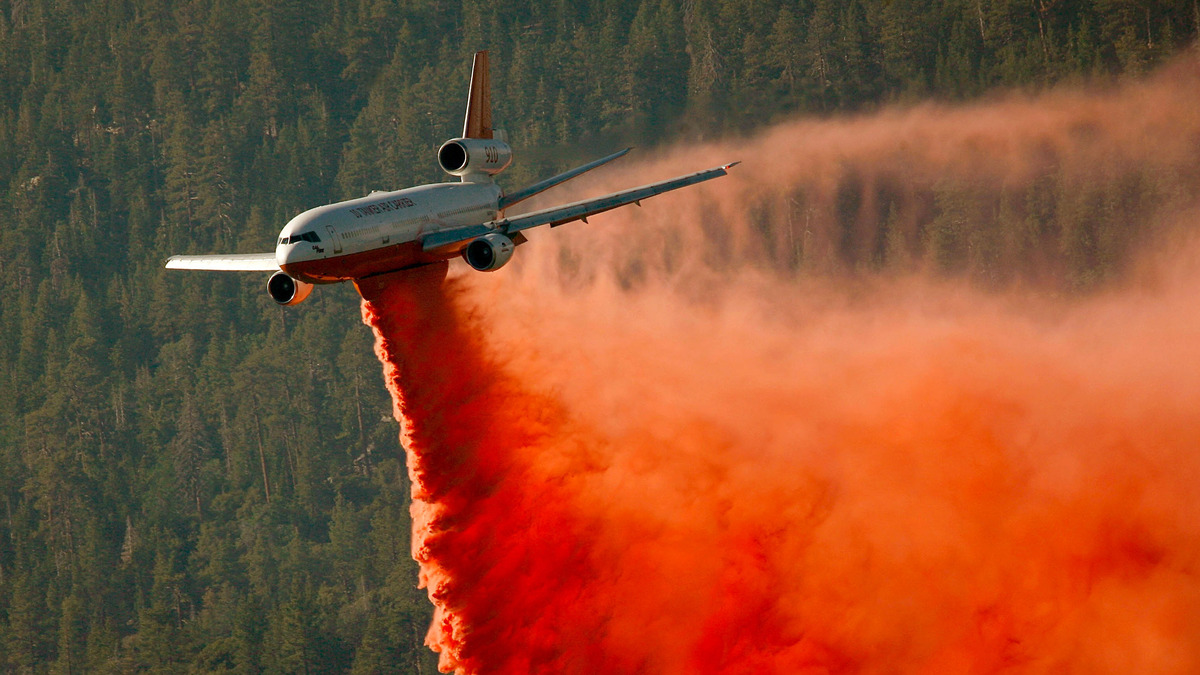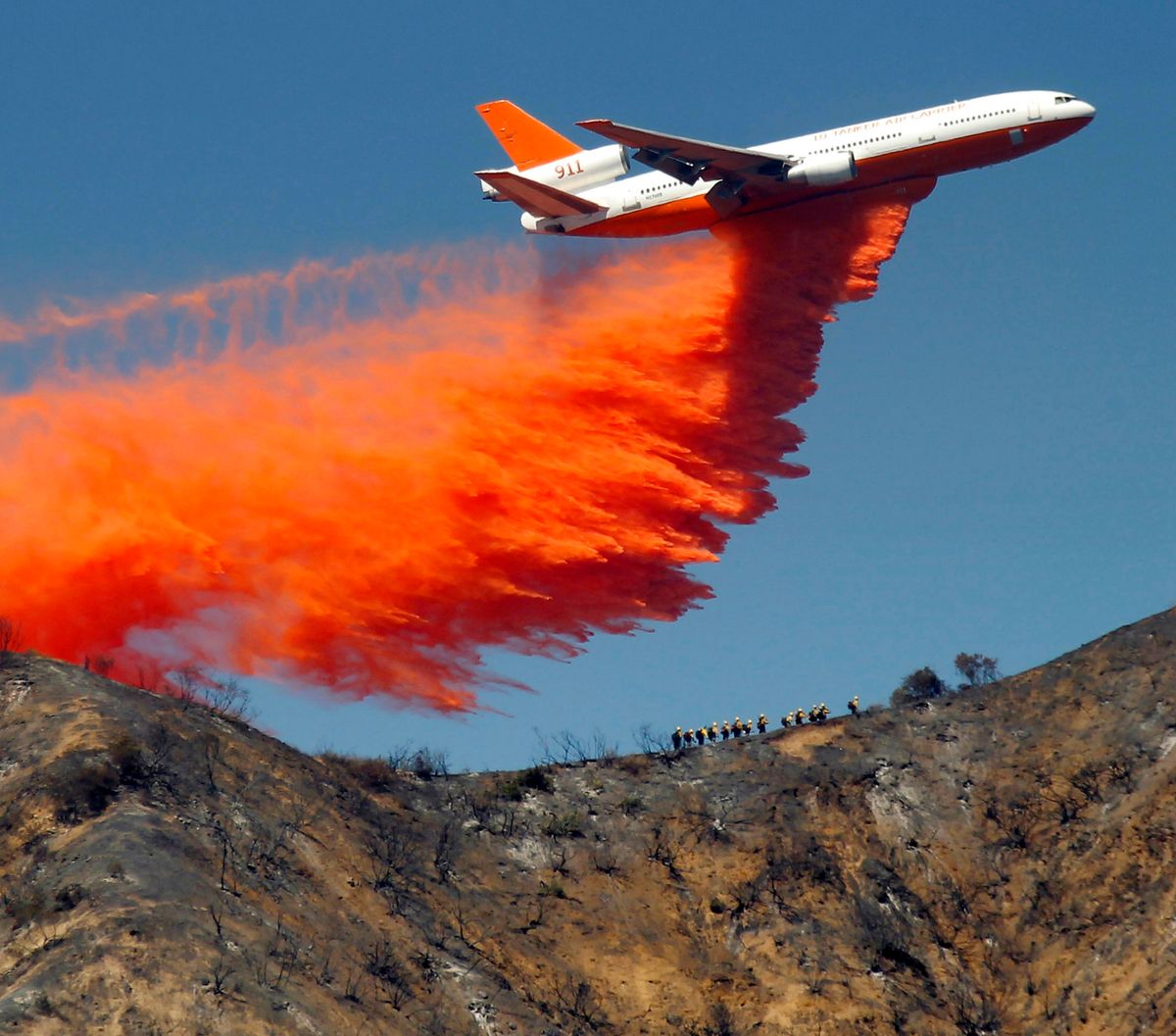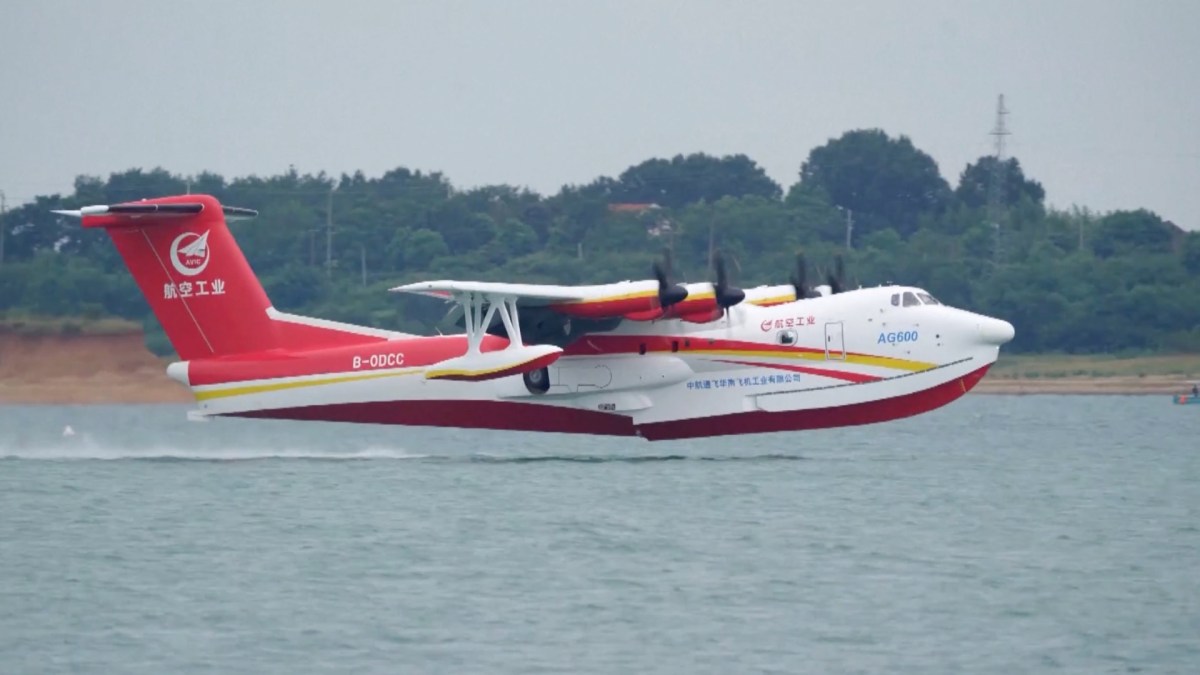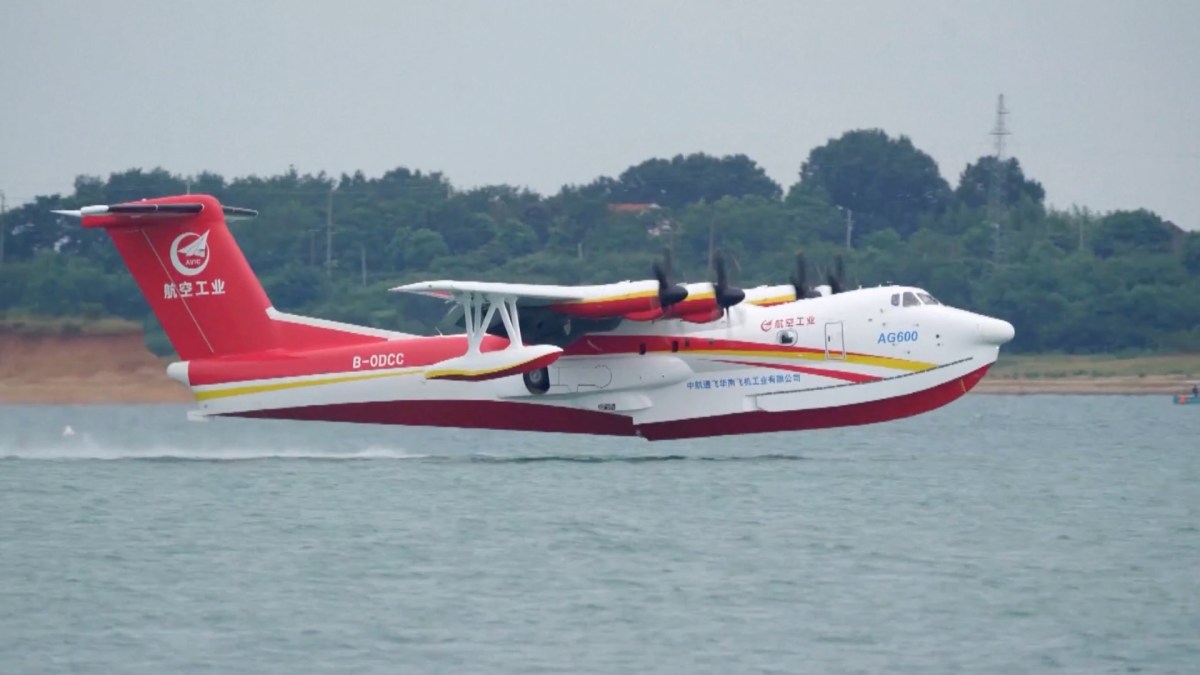Super scooper planes are incredible machines, essentially amphibious aircraft designed to fight wildfires. They scoop up massive quantities of water from lakes and reservoirs, then swiftly deploy it onto raging infernos. This unique firefighting technique offers a powerful and efficient way to combat wildfires, but it’s not without its challenges and limitations. We’ll explore the history, technology, environmental impact, and future of these amazing aircraft.
This guide delves into the fascinating world of super scooper planes, covering their evolution from early designs to the advanced models used today. We’ll examine their operational capabilities, the engineering marvels that make them work, and their role in wildfire management. We’ll also discuss the economic considerations, environmental impact, and future trends in super scooper technology.
A History of Super Scooper Aircraft
Super Scoopers, also known as amphibious air tankers, represent a unique and effective approach to aerial firefighting. Their ability to rapidly scoop water from a lake or other water source and immediately deploy it onto a fire has made them invaluable in wildfire suppression efforts globally. This section explores the evolution of this crucial technology.
Super Scooper Technological Evolution
The development of super scooper technology has been a gradual process, driven by the need for more efficient and effective aerial firefighting capabilities. Early designs were often adaptations of existing aircraft, focusing on adding water-scooping mechanisms. Subsequent innovations have focused on improving water capacity, speed, maneuverability, and overall safety. Key advancements include the development of more robust and efficient water scoop systems, improved engine technology for increased power and reliability, and the integration of advanced flight control systems for enhanced precision during water drops.
Super Scooper Development Timeline
A detailed timeline highlighting key milestones in super scooper development would require extensive research into specific aircraft models and their manufacturers. However, it’s safe to say that significant advancements have occurred over the past several decades, driven by the increasing demand for effective wildfire suppression strategies. The integration of modern materials and technologies has led to the creation of aircraft that are both more efficient and safer to operate.
Comparison of Super Scooper Models

Several manufacturers produce super scooper aircraft, each with varying specifications tailored to different operational needs. The following table compares three example models (note: specifications are illustrative and may vary depending on specific configurations):
| Model | Water Capacity (gallons) | Max Speed (knots) | Engine Type |
|---|---|---|---|
| Canadair CL-215 | 1400 | 150 | Piston |
| Canadair CL-415 | 1620 | 180 | Turboprop |
| Air Tractor AT-802F (modified for water scooping) | 800 | 180 | Turboprop |
Operational Capabilities and Techniques
The effectiveness of super scoopers relies heavily on efficient operational procedures and a thorough understanding of their capabilities and limitations. This section delves into the intricacies of super scooper operation in wildfire suppression.
Super Scooper Operational Procedures
The process of scooping water and deploying it onto a fire involves a series of precise maneuvers. The aircraft approaches the water source at a controlled speed, lowers its scoop, and skims the surface to fill the tanks. Once full, the aircraft climbs to the desired altitude and makes a controlled water drop over the fire, aiming for maximum impact.
Pilot skill and experience are critical factors in the successful execution of these procedures.
Advantages and Limitations of Super Scoopers
Super scoopers offer several advantages over other aerial firefighting methods, including their ability to rapidly refill their water tanks and their capacity to deliver large volumes of water directly to the fire. However, they are limited by their dependence on nearby water sources, their relatively lower speed compared to air tankers, and their susceptibility to weather conditions. Optimal operational effectiveness requires careful planning and consideration of these factors.
Comparison with Other Aerial Firefighting Methods

Super scoopers, helicopter bucket drops, and air tankers each have their strengths and weaknesses. Helicopter bucket drops are highly maneuverable but have limited water capacity. Air tankers can carry larger payloads but require more time to refill. Super scoopers offer a balance between speed, capacity, and maneuverability, making them particularly effective in situations where a nearby water source is readily available.
Visual Guide to the Water Scooping Process
- Takeoff: The aircraft takes off from a designated airfield.
- Approach: The aircraft approaches the water source at a controlled speed and altitude.
- Scooping: The scoop is lowered, skimming the water surface to fill the tanks.
- Climb: The aircraft climbs to the desired altitude.
- Water Drop: The aircraft performs a controlled water drop over the fire.
- Return: The aircraft returns to the water source for refilling.
Technological Aspects and Design
The design of a super scooper aircraft presents unique engineering challenges. This section explores the materials, technologies, and design features that contribute to their effectiveness in firefighting.
Engineering Challenges in Super Scooper Design
Designing a super scooper requires careful consideration of factors such as structural integrity to withstand the stresses of water scooping and high-speed flight, the efficient design of the water scoop system to minimize water loss and maximize scooping speed, and the integration of advanced flight control systems for precise maneuvering. Balancing these competing demands is a significant engineering challenge.
Materials and Technologies Used in Super Scooper Construction
Super scoopers are constructed using high-strength, lightweight materials such as aluminum alloys and composites to minimize weight and maximize payload capacity. Advanced technologies are employed in the design of the water scoop system, the flight control system, and the engine to enhance performance, reliability, and safety. Corrosion resistance is a crucial factor given the aircraft’s exposure to water.
Key Design Features Contributing to Effectiveness
Key design features that contribute to a super scooper’s effectiveness include a large water capacity, high speed, excellent maneuverability, and a robust and efficient water scoop system. These features allow the aircraft to quickly and effectively deliver large volumes of water to the fire, maximizing its impact on fire suppression efforts.
Innovative Design Solutions in Modern Super Scoopers
Modern super scoopers incorporate innovative design solutions such as advanced flight control systems that enhance precision during water drops, improved water scoop designs that minimize water loss and maximize scooping speed, and the use of lightweight, high-strength composite materials that enhance both performance and safety. These advancements continuously improve the effectiveness and efficiency of these aircraft.
Environmental Impact and Sustainability
The use of super scoopers in firefighting has both positive and negative environmental impacts. This section explores these impacts and considers strategies for improving the sustainability of super scooper operations.
Environmental Impact of Super Scooper Operations
While super scoopers are effective in suppressing wildfires, their operation does have some environmental impact. The noise generated by the aircraft can disturb wildlife, and the water used in fire suppression can temporarily alter water levels and potentially affect aquatic ecosystems. However, the positive environmental impact of preventing the spread of wildfires, which can cause extensive damage to ecosystems and release large amounts of greenhouse gases, significantly outweighs these negative aspects.
Reducing the Environmental Footprint
Several strategies can help reduce the environmental footprint of super scooper operations. These include optimizing flight paths to minimize noise pollution, using quieter engines, and ensuring that water sources used for scooping are carefully managed to minimize any negative impacts on aquatic ecosystems. Further research into more environmentally friendly materials and technologies can also contribute to greater sustainability.
Improving the Sustainability of Super Scooper Technology
Improving the sustainability of super scooper technology and practices requires a multifaceted approach. This includes investing in research and development of more environmentally friendly materials and technologies, implementing stricter regulations to minimize noise and water usage, and promoting sustainable practices in the operation and maintenance of these aircraft.
Potential Environmental Concerns and Mitigation Strategies, Super scooper plane
- Noise Pollution: Implement noise reduction technologies and optimize flight paths.
- Water Usage: Carefully select water sources and monitor water levels.
- Fuel Consumption: Utilize fuel-efficient engines and optimize flight operations.
- Emissions: Invest in cleaner engine technology and reduce reliance on fossil fuels.
Economic Considerations and Future Trends
The economic aspects of super scooper utilization in wildfire management are crucial for evaluating their overall effectiveness and future role. This section explores the economic benefits and costs, as well as future prospects for the super scooper industry.
Economic Benefits and Costs of Super Scooper Use
The economic benefits of using super scoopers include the significant reduction in property damage and loss of life caused by wildfires. However, the costs include the initial purchase price of the aircraft, maintenance and operational expenses, and the potential environmental costs associated with their operation. A cost-benefit analysis is essential to determine the overall economic viability of employing super scoopers in wildfire management strategies.
Super scooper planes are awesome for fighting wildfires, right? Their ability to quickly scoop up water is crucial, and improving their efficiency is always a good thing. Funding boosts like the one discussed in this article on the canada january 2025 oas boost could indirectly help; perhaps by funding research into more efficient water delivery systems that could benefit super scooper technology in the future.
Ultimately, anything that improves our wildfire response capabilities is a win.
Future Prospects for the Super Scooper Industry
The future of the super scooper industry looks promising, driven by the increasing frequency and intensity of wildfires globally. Technological advancements, such as the development of more fuel-efficient engines and improved water scoop systems, will further enhance their effectiveness and reduce their environmental impact. Increased demand is expected to drive further innovation and development in this sector.
Cost-Effectiveness Compared to Other Methods
The cost-effectiveness of super scoopers compared to other aerial firefighting methods depends on several factors, including the scale and location of the fire, the availability of water sources, and the specific operational costs associated with each method. A comprehensive analysis is necessary to determine which method offers the best value for money in different scenarios.
Hypothetical Scenario for Super Scooper Role in the Next Decade
In the next decade, super scoopers are likely to play an increasingly important role in wildfire management, particularly in regions with readily available water sources. Advancements in technology will likely lead to the development of even more efficient and environmentally friendly aircraft, increasing their overall effectiveness and reducing their operational costs. Their integration into comprehensive wildfire management strategies will be crucial for mitigating the devastating effects of wildfires.
Illustrative Examples of Super Scooper Deployments: Super Scooper Plane

Several successful super scooper deployments in major wildfire events highlight their effectiveness in wildfire suppression. This section details three examples, illustrating their impact and operational characteristics.
Successful Super Scooper Deployments
While specific details of super scooper deployments in major wildfire events are often not publicly available in detail due to operational sensitivity, it’s known that these aircraft have been instrumental in numerous successful wildfire suppression efforts around the world. Their ability to rapidly deploy large volumes of water directly onto the fire has proven crucial in containing and extinguishing wildfires in various geographic locations and fire scenarios.
The effectiveness often depends on factors such as the proximity of suitable water sources, weather conditions, and the overall fire management strategy.
Visual and Auditory Description of a Super Scooper in Flight

A super scooper in flight is a large, powerful aircraft, typically characterized by its high-mounted wings, a distinctive water scoop under the fuselage, and large water tanks. Its size is substantial, often comparable to smaller regional airliners. The shape is streamlined for efficient flight, and the water scoop is prominently visible, often retracted during flight and lowered for scooping.
During operation, the aircraft generates a significant amount of noise, a combination of engine roar and the sound of air rushing over the wings and fuselage. The sound is powerful and distinctive, noticeable from a considerable distance.
Detailed Description of the Water Drop Process
The water drop process involves a precise maneuver by the pilot. The aircraft approaches the fire at a controlled altitude and speed, then releases the water from its tanks. The water is released in a controlled manner, creating a large curtain of water that aims to suppress the fire’s flames. The effect on the fire is immediate, often resulting in a significant reduction in fire intensity and spread.
Super scooper planes are awesome for fighting wildfires, right? Their ability to quickly scoop up water is crucial, and improving their efficiency is always a good thing. Funding boosts like the one discussed in this article on the canada january 2025 oas boost could indirectly help; perhaps by funding research into more efficient water delivery systems that could benefit super scooper technology in the future.
Ultimately, anything that improves our wildfire response capabilities is a win.
The surrounding environment is also impacted, with the water creating a temporary dampening effect on vegetation and soil, reducing the risk of further fire spread.
Last Recap
Super scooper planes represent a vital tool in our arsenal against wildfires. Their ability to rapidly acquire and deploy large volumes of water makes them exceptionally effective in certain situations. While not a perfect solution, ongoing advancements in design and operational techniques promise to enhance their effectiveness and sustainability. Understanding their capabilities and limitations is crucial for effective wildfire management strategies in the years to come.
The future of these impressive aircraft looks bright, with potential for further innovation and expanded deployment globally.
FAQ Corner
How fast can a super scooper plane fly?
Super scooper planes are awesome, right? They’re basically giant water-bombing airplanes, crucial for fighting wildfires. One of the most famous examples is the Canadair CL-215, and its upgraded version, the cl-415 , is even more effective. These planes scoop up massive amounts of water in seconds, making them vital tools in wildfire suppression efforts worldwide. So next time you see a super scooper in action, appreciate the engineering marvel behind it!
Speed varies greatly depending on the model, but generally ranges from 100 to 200 mph.
What type of engines do super scoopers use?
Most use turboprop engines for their power and efficiency.
What are the limitations of super scooper planes?
They are limited by water source proximity, weather conditions (wind, visibility), and the type of fire they’re fighting (e.g., ground fires vs. crown fires).
How much water can a super scooper hold?
Capacity varies widely by model; some can carry over 1,000 gallons (3,785 liters).
Are super scoopers used everywhere?
No, their use depends on geographic factors (water sources) and the availability of the aircraft.
